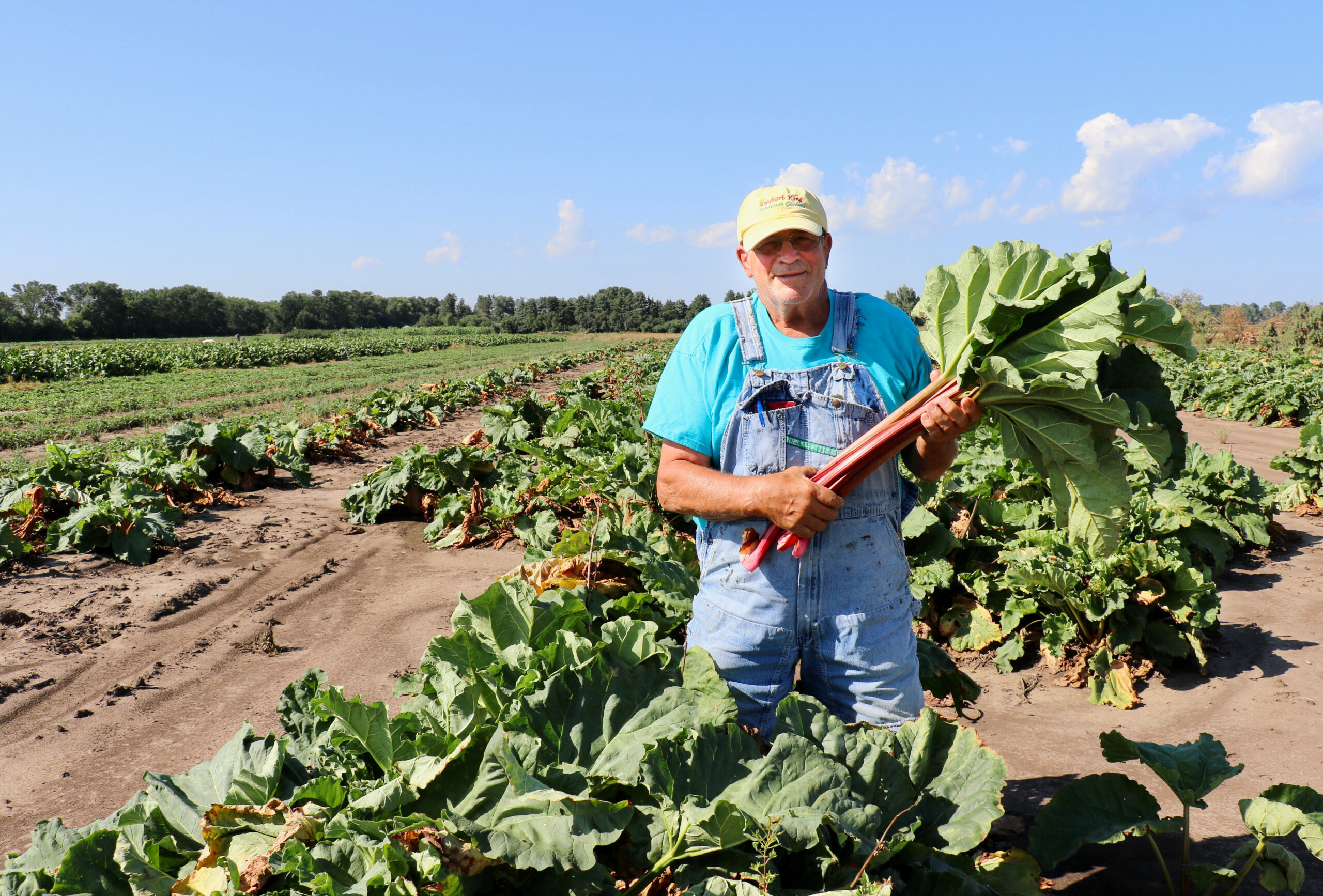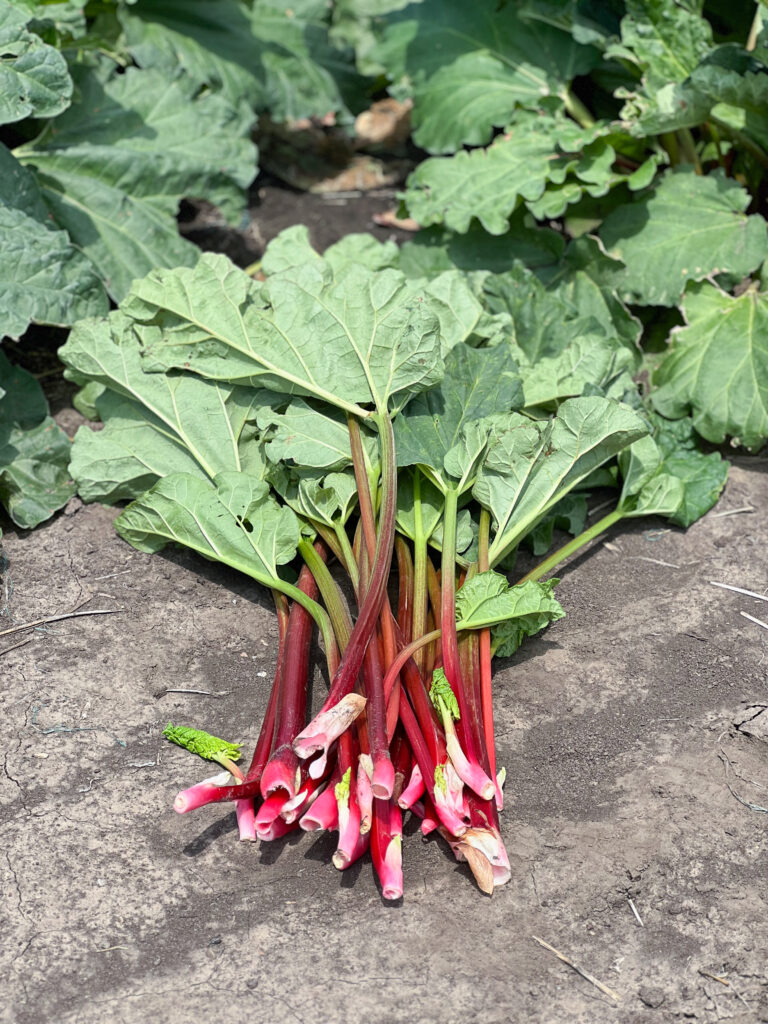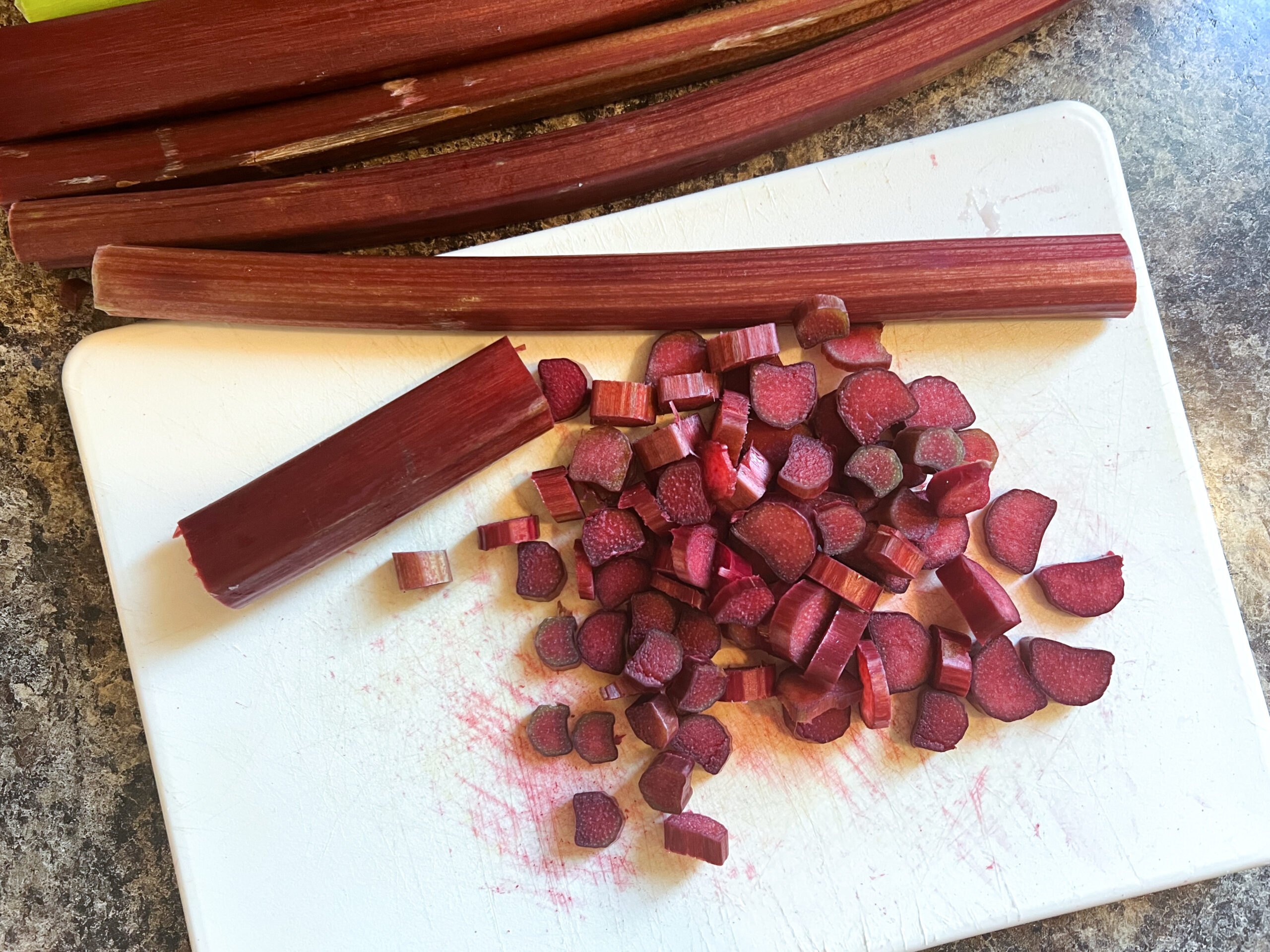“You would think that selling rhubarb in South Dakota would be like selling snowballs in Alaska, but it’s amazing—people come out and they’ll spend an hour or two picking,” says Jan Sanderson, farmer and owner of Sanderson Gardens near Brookings, South Dakota.
But when Sanderson turned 14 perennial rhubarb crowns into 200 crowns by cutting them up, he was growing more than what he could sell to his strawberry u-pick customers who commonly pair the sour stalks and sweet berries in dishes like pies, crisps, muffins, and sauce.
So just before he plowed them up to discard, he cold-called Gurney’s Seed and Nursery, located in Yankton at the time, and asked if they wanted any rhubarb roots.
“There was a specific variety that Jan grew that we didn’t have a source for,” says Allen Koliner, the now retired Gurney’s nursery buyer who took Sanderson’s call. “It was ‘Valentine’ which is very red all the way through and it’s what we needed.”
It was the early 1990s and Gurney’s purchased every bit of what Sanderson was about to jettison.
The market was hot. Sanderson added a handful more catalog seed companies and was selling approximately 30,000 root divisions each year. Gardeners around the world planted rhubarb, also known as the “pie plant,” grown by the self-proclaimed ‘Rhubarb King.’

Transplanting from Neighbors
To ensure he had enough roots to meet those nursery demands, he needed to expand his crop. So, Sanderson looked to fellow Midwesterners who had their own time-honored rhubarb patches.
“Most of my rhubarb I got by putting ads in newspapers saying if you want your rhubarb removed or thinned, give me a call. I’ll pay $2 a hill to do it,” Sanderson says.
Over the next 15 years, he collected and split rhubarb roots from an estimated 150 patches in five neighboring states, expanding to nearly eight acres of rhubarb on his farm.
He had fun with it. Sanderson dug up rhubarb crowns, cut them into pieces, and cloned the reddest plants with the least seed stalks, developing a variety he named but never patented, ‘Sanderson Red.’
Whether red or green stalks, the flavor is pretty identical. So why is solid red rhubarb coveted? As Sanderson puts it, “It’s kind of a social thing so that’s what I’ve tried to provide. People think the best rhubarb is red.”

Pour a Glass of Rhubarb
After a hailstorm in 2003, Jim Schade, founder of Schadé Vineyard and Winery west of Volga, went to Sanderson Gardens to pick strawberries for their wine. “I remember looking at the rhubarb and it was just hammered,” Jim says. “I say, ‘well I think we can use this,’ so Jan got a whole flock of kids out there and they picked a couple thousand pounds of rhubarb for us.”
Back at the winery, they crushed it, pressed the juice and turned it into rhubarb wine. To this day, strawberry rhubarb wine is Schadé’s number two seller.
Sanderson supplies rhubarb to five local wineries, averaging 2,000-4,000 pounds for each winery annually.
14 Crowns into 200
After 47 years of operating Sanderson Gardens on land he grew up on in Aurora, South Dakota, Sanderson honors his roots. His dad, Cecil, a district extension supervisor at the time, planted those first 14 crowns of rhubarb on the farm.
“He was driving by an experimental patch at the college [South Dakota State University] that they were plowing up and he asked if he could have the roots,” Sanderson recalls. “He filled his Volkswagen Beetle with rhubarb roots, brought them home and planted them in our garden.”
Cecil sowed the seed of innovation and adventure into his son’s legacy as the Rhubarb King. Whether it’s rhubarb picking for families, plant dividing among neighbors, or pie baking with grandma, Jan Sanderson is cultivating memories for generations to come.
Rhubarb Custard Pie
Jan Sanderson was raised on rhubarb custard pie with vanilla ice cream. Recipe courtesy of Jan Sanderson.
Ingredients
1½ cups sugar
¼ cup all-purpose flour
¼ tsp ground nutmeg
Dash of salt
3 beaten eggs
4 cups (1-inch diced) rhubarb
2 9-inch pie crusts
2 Tbsp unsalted butter
Mix sugar, flour, nutmeg, and dash of salt.
Add the dry mixture to 3 beaten eggs; beat until smooth.
Stir in diced rhubarb.
Line bottom of 9-inch pie plate with 1 pastry crust.
Fill with rhubarb mixture. Dot the top with 2 tablespoons of unsalted butter. Top with lattice pastry crust and seal.
Bake at 350 degrees Fahrenheit for 50 minutes.

